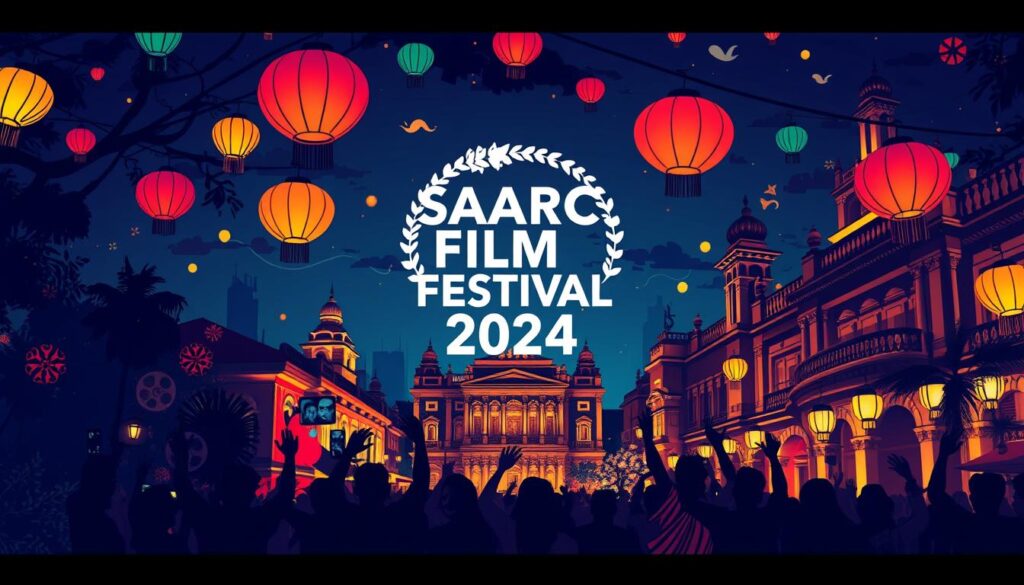Sri Lankan State Drama Awards Honor Theater Excellence 2022
The 2022 State Drama Award Ceremony celebrated theatrical excellence at the Maharagama National Youth Service Council Auditorium. President Ranil Wickremesinghe presided over this golden jubilee event. It honored artists and craftsmen who contributed to Sri Lanka’s performing arts.
The Ministry, Department of Cultural Affairs, and State Drama Advisory Council jointly organized the ceremony. It recognized outstanding achievements in Sri Lankan theater. The event highlighted the nation’s dedication to nurturing and promoting performing arts.

The State Drama Awards have been a tradition since 1956. Sri Lankan citizens submitted applications across 34 categories in Sinhala, Tamil, and English. The final round featured 10 long plays and 21 short plays.
This selection showcased the depth and diversity of Sri Lankan theater. It demonstrated the country’s rich theatrical talent and creativity.
Key Takeaways
- President Ranil Wickremesinghe presided over the 2022 State Drama Award Ceremony, celebrating the golden jubilee of theater excellence in Sri Lanka.
- The event recognized outstanding achievements in Sri Lankan theater across 34 categories in Sinhala, Tamil, and English.
- The ceremony showcased the collaborative efforts of the Ministry, Department of Cultural Affairs, and State Drama Advisory Council in promoting performing arts.
- The State Drama Awards, a tradition since 1956, received applications from Sri Lankan citizens, with 10 long plays and 21 short plays selected for the final round.
- The event highlighted the nation’s commitment to nurturing and recognizing exceptional talent in the theater industry.
2022 State Drama Award Ceremony Celebrates Theatrical Excellence
The 50th State Drama Festival – 2022 award ceremony honored Sri Lankan theater achievements. It was organized by the Ministry of Religious Affairs, Department of Cultural Affairs, and State Drama Advisory Council. The event celebrated dramatic excellence and recognized outstanding stage talent.
President Ranil Wickremesinghe Presides Over Golden Jubilee Event
President Ranil Wickremesinghe attended the golden jubilee ceremony. He personally honored artists for their contributions to Sri Lankan drama. The event highlighted the nation’s rich theatrical heritage and exceptional talents.
Collaborative Effort by Ministry, Department of Cultural Affairs, and State Drama Advisory Council
The 50th State Drama Festival award ceremony showcased successful collaboration. The Ministry of Religious Affairs, Department of Cultural Affairs, and State Drama Advisory Council worked together. Their efforts paid tribute to artists who have enriched Sri Lankan theater.
Outstanding Achievements in Sri Lankan Theater Recognized
The ceremony recognized excellence in various theatrical categories. These included performances, direction, playwriting, and technical aspects like art direction and make-up. It also honored camera work, editing, music, and sound design.
The event celebrated the diverse talents in theater. It acknowledged the commitment of stage talent to their craft.
Exceptional Talents Honored at State Drama Awards
The Sri Lankan State Drama Awards celebrated theatrical brilliance. It recognized outstanding achievements of distinguished artists and productions. The event showcased incredible talent within the Sri Lankan theater community.
Excellence in various aspects of performing arts was celebrated. The awards highlighted the dedication of artists and production teams.
M. M. Rauf and Prof. Sunanda Mahendra Recognized for Remarkable Contributions
M. M. Rauf and Prof. Sunanda Mahendra received honors for their contributions to Sri Lankan theater. Their lifelong dedication to dramatic arts was acknowledged. The ceremony highlighted their role in shaping the country’s theatrical landscape.
Awards Bestowed Upon Hiran Abeysekera, M. Saphir, Sujeeva Pathinisekara, Subuddhi Lakmali, and Nalan Mendis
Hiran Abeysekera, M. Saphir, Sujeeva Pathinisekara, Subuddhi Lakmali, and Nalan Mendis received accolades. They were recognized for exceptional performances and contributions. These talented performers showcased their skill, versatility, and commitment to craft.
The ceremony launched a special commemorative stamp and captivating exhibition. These initiatives highlighted the rich history of Sri Lankan drama. They showcased theater’s role in shaping cultural identity and artistic expression.


